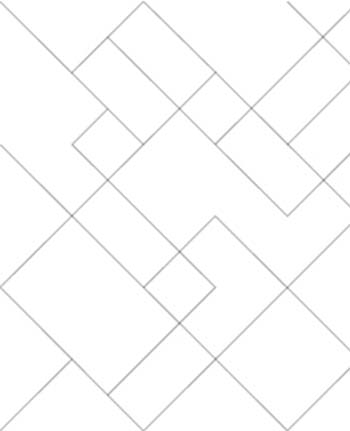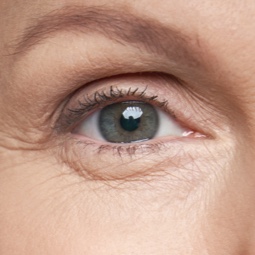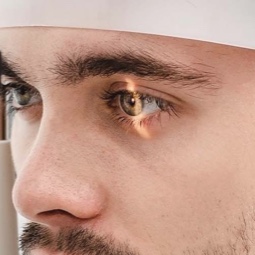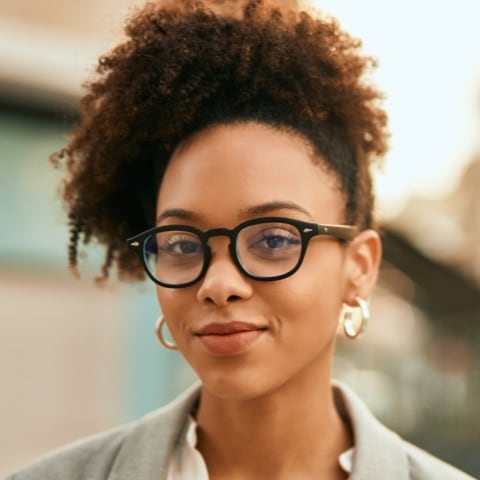Screen-Based Strain
What does your technology do for you? Today, we can order dinner, buy concert tickets, chat with friends, play games, and even work from virtually any device with a screen. Smartphones, gaming consoles, computers, and tablets make our lives more convenient.
But, there are some drawbacks to increased screen time. It’s almost impossible to get away from our devices and as a result, an estimated 65% of Americans suffer from discomfort related to digital eye strain.
Digital eye strain is also known as computer vision syndrome. It refers to a group of ocular issues stemming from too much time spent using digital devices.
If you’re experiencing eye discomfort after staring at your screen, we can help. We can assess your screen habits and provide strategies to mitigate your discomfort.
Book an appointment to find relief from digital eye strain today.
Book AppointmentSymptoms of Digital Eye Strain
There are a few common symptoms associated with digital eye strain, including:
- Dry eyes
- Headaches
- Strained eyes
- Blurry vision
- Neck and shoulder pain
Often, symptoms will alleviate when you take a solid screen time break. But, discomfort can return once you’re in front of a digital device again. In order to find relief in the long term, you may need to implement some mitigation strategies.
It’s also important to visit your optometrist to assess whether there’s another underlying condition contributing to your symptoms.
Book Appointment

Mitigating Digital Eye Strain
Adjusting your work area, taking intentional screen breaks, and adjusting your lighting while using a digital device are all strategies that help reduce digital eye strain.
Ergonomics
Office ergonomics and proper posture can help to keep you comfortable while using digital devices. While you’re at your desk, be sure to sit upright with your feet flat on the floor. Your shoulders should not be rounded or hunched and your neck should align with your torso.
Screens should be about 4–5 inches below eye level and 20–28 inches from your eyes. And keep your keyboard and mouse near enough to prevent reaching.
Settings
If you’re reading on your digital device, increase the font size to minimize squinting. Contrast and color tones should also be set to maximize your comfort.
Lighting Levels
The levels of light both in the room around you and on your device can prevent digital eye strain. Turn down your screen’s brightness to match the lighting levels of your surroundings. If the light from the room is reflecting in your screen, the glare can also contribute to eye strain.
Anti-glare screens are available for your device’s display, and glasses with an anti-reflective coating can help.
The 20-20-20 Rule
When you’re concentrating on your work, it might be challenging to take a break, but following the 20-20-20 rule can help to relax your eyes. Every 20 minutes, look at something 20 feet away for 20 seconds. This gives your eyes a chance to refocus, helping to reduce strain.
Kids & Digital Eye Strain
Adults use screens frequently, but they’re creeping into kids' lives too. Studies show that the risk of children developing visual issues increases after more than 3 hours of screen time.
Increased device use also means kids are spending more time indoors. The World Health Organization recommends limiting screen time for children and encouraging them to play outside instead.
Children should have regular, comprehensive eye exams to assess the health of their vision, regardless of their screen time.
Book an appointment today!
Book AppointmentCome Visit Us
Redmond Eye Doctors offers comprehensive eye care services and in-demand lenses and frames to Redmond and the surrounding communities. Click or call to connect, and access the quality of vision care you deserve.

Our Address
- 8630 164th Ave NE Suite 100
- Redmond, WA 98052
Contact Information
- Phone: 425.885.7363
- Fax: 425.861.5585
- Email: [email protected]
Hours of Operation
- Monday: 8:00 AM – 5:00 PM
- *Tuesday: 10:00 AM – 7:00 PM
- Wednesday: 8:00 AM – 5:00 PM
- Thursday: 10:00 AM – 7:00 PM
- Friday: 8:00 AM – 4:00 PM
- Saturday: Closed
- Sunday: Closed
*Tuesday Closed 1:30PM-2:30PM
Our Brands




Our Google Reviews
Our Blogs
OptiLight by Lumenis
OptiLightAre You Struggling with Dry Eyes? You rely on your vision every day, but irritating dry eye symptoms can get in the way of living life to its fullest. Not only are dry eyes uncomfortable, but they can also impact your job performance, make daily tasks increasingly difficult, and so much more. Our optometry team […]
Why Do We Have Different Eye Colors?
Vision TipsMelanin, the same compound that determines skin and hair color, is also responsible for different eye colors. Melanin helps to protect the eye by absorbing light (including some UV light) that hits the iris, which is the part of the eye that controls the amount of light that reaches the retina. How Rare Are Different […]
The History of Corrective Lenses
Vision TipsPeople have been using tools to help them see clearly since at least 60 A.D. Roman philosopher Seneca is recorded to have used a glass globe of water to magnify text, while Emperor Nero would use a magnifying emerald to see gladiator fights better. We no longer need to resort to using water bowls or […]
OptiLight by Lumenis
Are You Struggling with Dry Eyes? You rely on your vision every day, but irritating dry eye symptoms can get in the way of living life to its fullest. Not only are dry eyes uncomfortable, but they can also impact your job performance, make daily tasks increasingly difficult, and so much more. Our optometry team […]
Why Do We Have Different Eye Colors?

Melanin, the same compound that determines skin and hair color, is also responsible for different eye colors. Melanin helps to protect the eye by absorbing light (including some UV light) that hits the iris, which is the part of the eye that controls the amount of light that reaches the retina. How Rare Are Different […]
The History of Corrective Lenses

People have been using tools to help them see clearly since at least 60 A.D. Roman philosopher Seneca is recorded to have used a glass globe of water to magnify text, while Emperor Nero would use a magnifying emerald to see gladiator fights better. We no longer need to resort to using water bowls or […]













